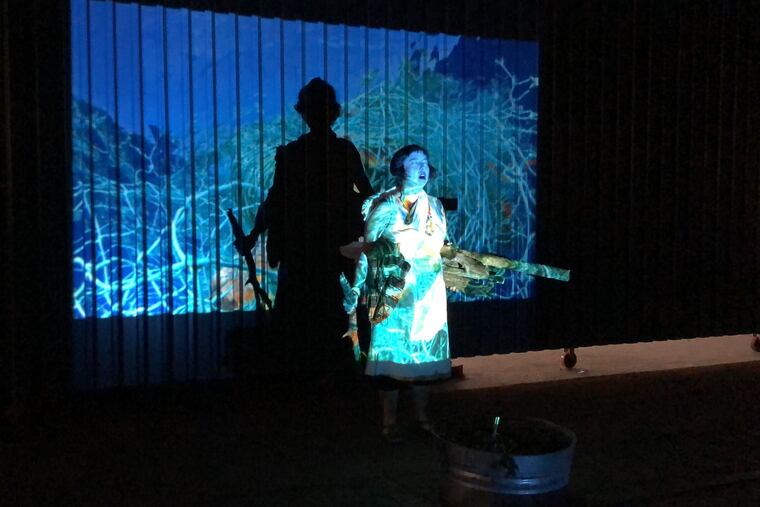What’s the connection between Latino American artists and a German explorer? Philadelphia.
“The Unity of Nature: Alexander von Humboldt in the Americas,” pays homage to his travels in the Americas, including a stop in Philadelphia in 1804.

The love that artist Henry Bermudez has for German scientist Alexander von Humboldt started in his hometown of Caracas, Venezuela. Humboldt’s name is all over the place: a hotel in the capital, a private university, the second-highest peak in the country, parks and streets.
“Once here in Philadelphia, I felt nostalgic for Venezuela," he said. "I remembered my times in the Amazons, like Alexander von Humboldt himself, when he sailed the Orinoco River and studied its flora and fauna.”
In Latin American and Caribbean countries, Humboldt is best known for a 6,000-mile journey from 1799 to 1804 that took him through what is now modern-day Ecuador, Peru, Venezuela, Colombia, Mexico, and Cuba. Humboldt’s five-year trip helped him develop theories about nature as an interconnected system, as well as the negative impact mankind would have on it.
It is Humboldt’s observations of the natural world that continue to inspire Bermudez, 68 — even after he fled Venezuela, migrated from Miami to Philadelphia in 2003, and changed his medium from oil on canvas to paper-cut drawings.
Now, he is one of the five artists presenting work in “The Unity of Nature: Alexander von Humboldt in the Americas,” an exhibit at the Cherry Street Pier that celebrates the 250th anniversary of the scientist’s birth. The exhibition, organized by Casa de Duende — an art house dedicated to socially relevant work — features 18 pieces of photography, video, sound, performance, painting, and sculpture that pay homage to Humboldt’s travels in the Americas, including a stop in Philadelphia in 1804.
David Acosta, the artistic director for Casa de Duende, spent about two years finding Philly-based artists who have a connection to the explorer and his concerns for the environment, and then locating a home for the exhibit.
“People ask: ‘Who is this Humboldt?’ and that is so telling to why we live in times of global warming and the destruction of the environment,” Acosta said. “That’s why this exhibit is a needed experience.”
The artists
Pedro Ospina, a Philly-based Colombian: The sculptor, who usually uses organic, sustainable materials, reused Styrofoam packaging to build three sculptures. The pieces recognize the people of the Lenni-Lenape tribes, considered the first settlers of the area, and the land’s original protectors.
Salomé Cosmique, a Philly-based Colombian: Using guttural sounds and video imagery, the performance artist invoked the Andean earth mother Pachamama to emphasize the connections between man and nature in a ritual to bring awareness and pay homage to Humboldt’s ideas of a systemic world.
Rebecca Martell, a Philly-based Mexican: “Deciphering” is the title of four photos inspired by Humboldt’s travels through the indigenous regions of Mexico. They focus on Mayan cultures and the impact that these civilizations had on the explorer.
Devin Asher Cohen, a Mexico-based Philadelphian: Two audio samples — one of wind and one of water — on a continual loop and set as the backdrop for the exhibit represent Humboldt’s perspective during his travels from Puebla, Mexico, to Philadelphia.
Henry Bermudez, a Philly-based Venezuelan: Eight artworks that combine drawings, acrylic paint and precision-cutting techniques that celebrate the environmental elements that connect Humboldt, the artist, and his love for Latin American native culture and nature.
Verónica Ponce de León, 50, attended the opening last month. She said the combination of artistic talents and skills help encapsulate what can sometimes seem like an overwhelming topic.
“The various platforms and different ways in which the artists interpret these works for nature," she said, "makes social criticism digestible.”
Noon to 6 p.m. Sunday-Thursday, noon to 8 p.m. Friday-Saturday, until Dec. 9, at Cherry Street Pier.